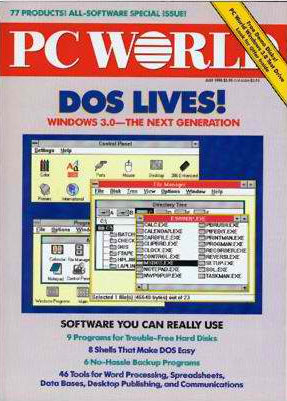 Analyst John Pescatore: “Other thank cloud computing, what’s the riskiest bet you’re currently making?”
Analyst John Pescatore: “Other thank cloud computing, what’s the riskiest bet you’re currently making?”
Steve Ballmer: “The next release of Windows.”
–exchange at Gartner conference, October 2010
Looks like Ballmer wasn’t just blustering. “Windows 8,” or whatever it ends up being called, has a radically new interface–a sleek, touch-centric look that draws more on Windows Phone 7 and general trends in phone and tablet design than it does on a quarter-century of Windows history. Anyone writing about the operating system at this point needs to insert a disclaimer that we’ve only seen bits and pieces of it in action for a few minutes; that’s way too little to come to any firm conclusions pro or con. But we do know that Microsoft is going to attempt something big here.
In my post yesterday evening, I said that Windows 8 looks like the most radical change in Windows’ interface since Windows 3.0. It’s possible that that’s understating matters. By providing both the new interface and apps to go with it, plus the old interface and apps, Microsoft is asking users to live in two worlds in a way it’s never done before.
Except it has. This situation sounds a lot like the computing lifestyle that PC users lived with from 1990-1995 or thereabouts, when the commonplace state of affairs was to run Windows 3.x on top of DOS.





 Google today announced its first significant update to Android 3.0 Honeycomb. Google will roll out the update to Verizon Xoom 3G users today, and to other Honeycomb devices over the next couple of weeks.
Google today announced its first significant update to Android 3.0 Honeycomb. Google will roll out the update to Verizon Xoom 3G users today, and to other Honeycomb devices over the next couple of weeks. Google unveiled a new version of Android (deliciously nicknamed “Ice Cream Sandwich”) at this morning’s keynote at Google I/O in San Francisco. Ice Cream Sandwich brings the best features of Honeycomb to mobile phones. Still, other than a few intriguing demos, Google did not disclose many details about the update such as when it will be available to consumers.
Google unveiled a new version of Android (deliciously nicknamed “Ice Cream Sandwich”) at this morning’s keynote at Google I/O in San Francisco. Ice Cream Sandwich brings the best features of Honeycomb to mobile phones. Still, other than a few intriguing demos, Google did not disclose many details about the update such as when it will be available to consumers.